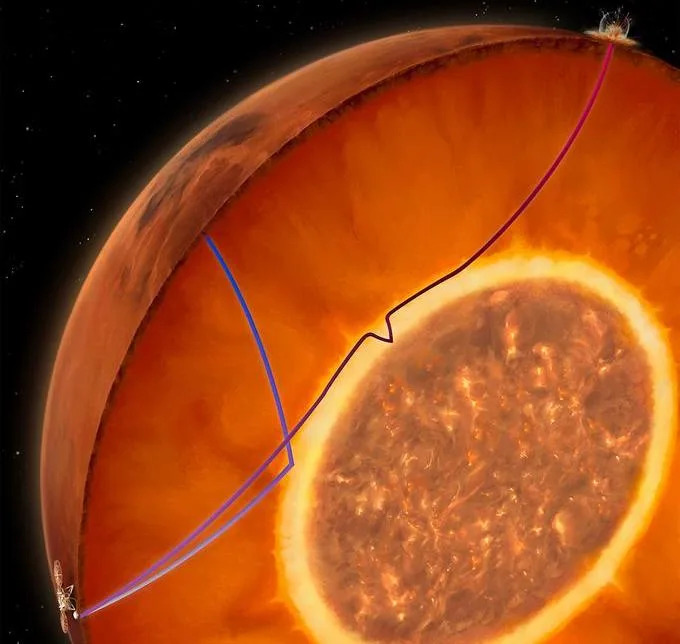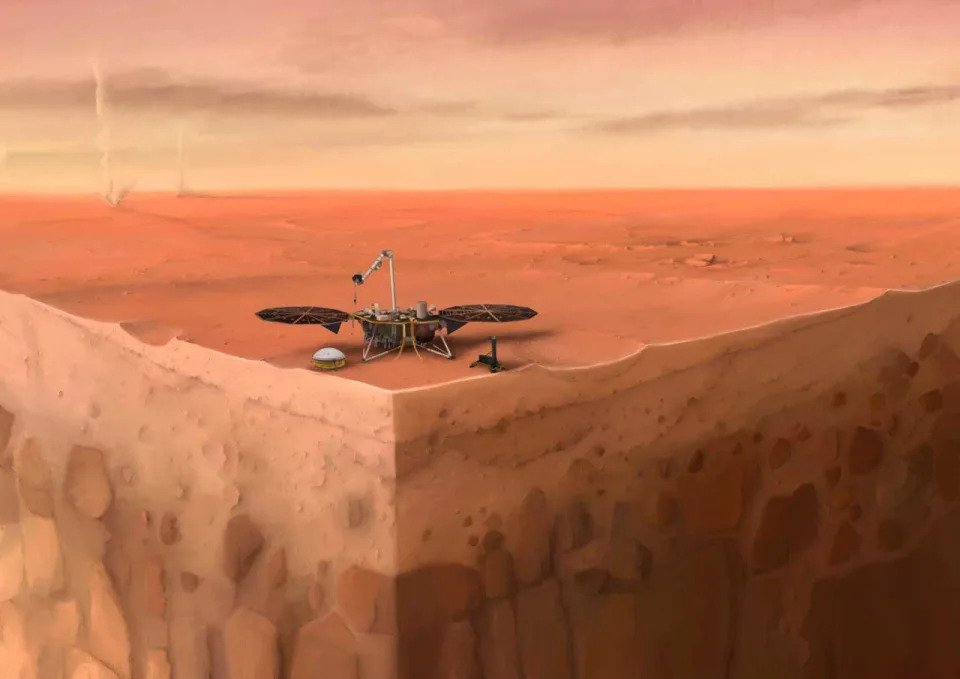Data collected from a meteorite impact on Mars, which NASA’s InSight lander recorded in 2021, is providing clarity on the composition of the red planet’s interior. Two separate studies published in the journal Nature have now determined that Mars’ iron-rich core is smaller and denser than previously believed, and it is enveloped by molten rock.
The InSight lander, which had completed its mission, arrived on Mars in November 2018 and spent four years capturing seismic waves generated by marsquakes. This data has been crucial for scientists in gaining a better understanding of the planet’s subsurface structure. However, initial estimates of Mars’ core based on InSight’s early readings from nearby quakes raised questions. At the time, scientists had estimated the core’s radius to be somewhere between 1118 and 1149 miles, significantly larger than expected. Additionally, the core contained an unexpectedly high concentration of lighter elements alongside its dense liquid iron, which posed a puzzle.
Dongyang Huang, a co-author of one of the studies, described the numbers for these light elements as “bordering on the impossible.” Scientists had been puzzled by these results for some time. A breakthrough occurred when a meteorite struck Mars in September 2021, on the opposite side of the planet from InSight’s location, generating seismic waves that, according to Cecilia Duran, a doctoral student at ETH Zurich, “allowed us to illuminate the core.”

Based on these measurements, both research teams have determined that Mars’ core likely possesses a radius ranging from about 1013 to 1060 miles. Remarkably, this core is roughly half the size of the planet itself. A smaller core would also indicate greater density, resolving the previously puzzling overabundance of light elements by reducing them to more reasonable quantities. Additionally, the teams discovered a surrounding layer of molten silicates approximately 90 miles thick, which had initially skewed the estimates. Notably, this layer’s characteristics diverge from anything found in Earth’s interior.
As described by Vedran Lekic, a co-author of the second paper and affiliated with the University of Maryland, this layer functions as a sort of “heating blanket” for the core, effectively concentrating radioactive elements. Investigating this layer could provide valuable insights into Mars’ formation and the absence of an active magnetic field on the planet.




